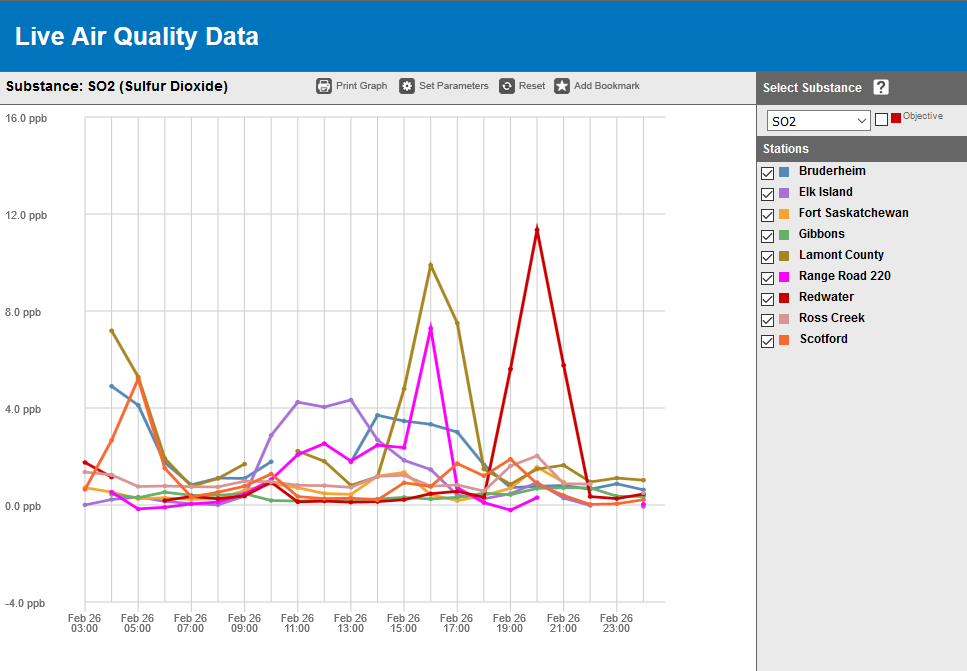Air Quality
 We monitor and report air quality data for a variety of reasons:
We monitor and report air quality data for a variety of reasons:
- Real-time data is important to track key substances and note when a concentration exceeds its Ambient Air Quality Objective. The Government of Alberta is immediately notified when an exceedance occurs. Our data helps them determine if a health advisory is appropriate.
- Data from our Bruderheim, Fort Saskatchewan, Gibbons, Town of Lamont, Redwater, Elk Island National Park and Portable Station is used to help calculate a daily and forecast Air Quality Health Index. Average 2022 ratings for AQHI show the air quality in our Airshed is of low risk to health the vast majority of the time.
- The data we collect is also used to report against the Air Quality Management System (AQMS), which is a national approach to air quality management in Canada. The goal is to achieve better air quality and significant health and environmental benefits for Canadians through keeping clean areas clean and continuous improvement. A component of the system is the Canadian Ambient Air Quality Standards (CAAQS), which have been developed for fine particulate matter (PM2.5), ozone (O3) nitrogen dioxide (NO2) and sulphur dioxide (SO2). All provinces and territories including Alberta must annually report the status of air quality as compared with the new national standards. Reporting is aligned with Land Use Framework regions. Fort Air Partnership falls into the North Saskatchewan Region. The latest assessment for Alberta was released in 2022. This assessment used data collected from 2017-2019 to compare to the new CAAQS.
- In January, 2015, a Fine Particulate Matter Response Plan for the Capital Region was finalized. Fort Air Partnership is participating in implementing the plan as part of the Capital Region Oversight Advisory Committee.
 The 24/7 data we collect from our continuous monitoring stations is reported on an hourly basis and posted on our Live Air Quality Data feed. It has near real time hourly readings. Dates and times are adjustable and you can compare readings to provincial objectives.
The 24/7 data we collect from our continuous monitoring stations is reported on an hourly basis and posted on our Live Air Quality Data feed. It has near real time hourly readings. Dates and times are adjustable and you can compare readings to provincial objectives.
Our data is sent to the Government of Alberta for calculating the Air Quality Health Index and is shared with various government departments. It is tested, reviewed and validated through a rigorous quality assurance program to ensure the highest quality data is collected. Once the data has been validated it is archived in a Government of Alberta Air Data Warehouse where it can be accessed by anyone, including various levels of government, industry, researchers and any member of the public.

